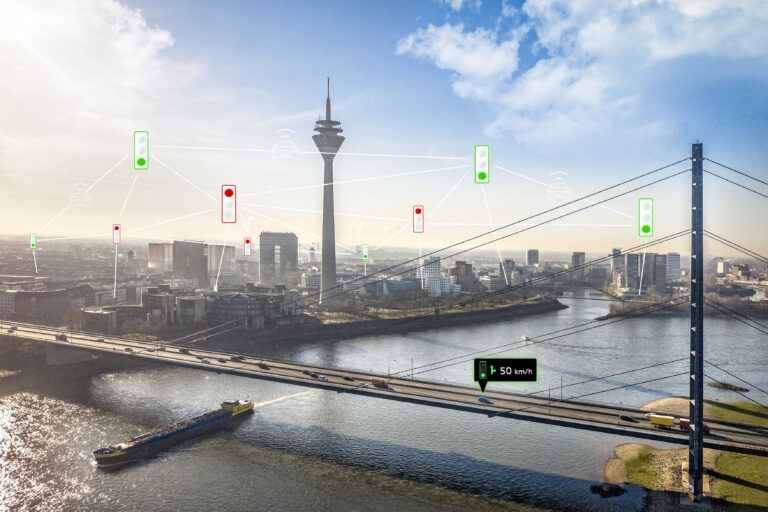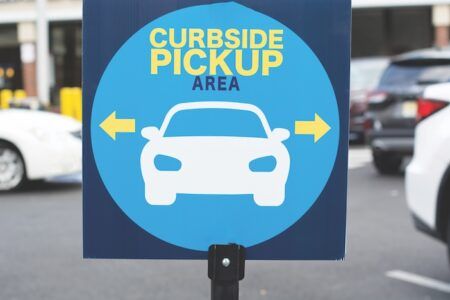Audi increases chances of drivers catching the ‘green wave’ as its smart traffic light information system is introduced in a second German city.
Following a successful implementation of the networking of traffic lights in Ingolstadt, the OEM has chosen Dusseldorf to be the next place for Audi drivers to benefit from the Vehicle-to-infrastructure (V2I) service.
Initially drivers will receive information from around 150 traffic lights in the city on the Rhine on their dashboard, with the expectation that approximately 450 of Dusseldorf’s 600 traffic lights networked by early summer.
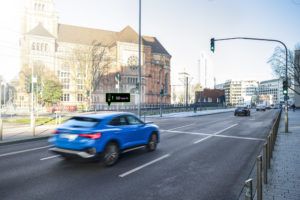
Consisting of two functions, the traffic light information service has Green Light Optimized Speed Advisory (GLOSA) and Time-to-Green. The former calculates the ideal speed for getting a ‘green wave’ of traffic signals without accelerating unnecessarily – thus increasing safety on the roads.
GLOSA is also able to suggest gradual speed reductions 250 metres ahead of the lights to avoid the vehicle having to come to a complete standstill prior to the lights turning green and so reduce inefficient fuel use.
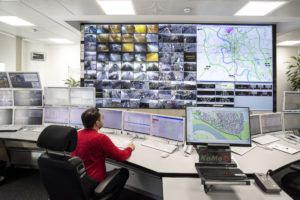
If stopping at a red light is unavoidable, a countdown displays the seconds remaining until the next green phase begins (Time-to-Green). Drivers can relax, take their foot off the gas pedal and save fuel. A number of studies conclude that drivers move through cities more efficiently thanks to networked traffic lights. In a pilot project, Audi was able to reduce fuel consumption by 15%.
“With Audi Traffic Light Information we wish to improve convenience for drivers, increase traffic safety and encourage an economical style of driving that looks ahead,” says Andre Hainzlmaier, head of development for Apps, Connected Services and Smart City at Audi.
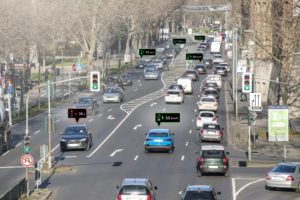
“To do this, we have to predict precisely how traffic lights will behave in the next two minutes. At the same time, exact forecasts are the biggest challenge. Most signals react variably to traffic volume and continuously adapt the intervals at which they switch between red and green.”
Audi and its project partner Traffic Technology Services (TTS) have developed a complex analytical algorithm that calculates exact predictions from three sources: from the control program of the traffic signals; from the real-time data of the traffic computer, a combination of road-occupation cameras, detector strips in the road surface, data on approaching buses and trams, and buttons that pedestrians press; as well as from historical data. The forecast algorithm improves itself continuously and learns how, for example, the traffic volume changes in morning commuter traffic or at midday when children leave nurseries and schools.
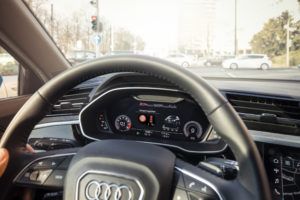
The Audi fleet plays a decisive part in optimizing the traffic light forecasts. “The cars send anonymized data when traffic lights are crossed to an Audi backend, which checks whether the actual crossings of traffic lights correspond to the forecast data. Only after this are the traffic lights cleared for the display in the car,” Hainzlmaier explains.
In future the cities, too, will receive useful information about their traffic light infrastructure. The data show, for example, whether cars stop unusually often at a particular intersection or whether the average waiting time is comparatively long. “We aggregate the recorded data into reports that we will make available to the city authorities. Traffic lights can then be given more efficient phasing and traffic will flow better.”
Audi Traffic Light Information first appeared in 2016 in Las Vegas. Today this V2I service is available at more than 10,000 intersections in North America, including some 2,000 in Manhattan/New York City and more than 1,600 around the US capital Washington D.C. Audi is also the world’s first automotive manufacturer to network its series-production models with city traffic lights.
Audi Traffic Light Information operates in all Audi e-tron, A4, A6, A7, A8, Q3, Q7 and Q8 models that have been produced since mid-July 2019 (the “2020 model year”). The pre-requisites are the Audi connect Navigation & Infotainment package and the optional camera-based traffic-sign recognition.
To watch a video of the system in action, click HERE
Follow us on twitter @TrafficTechMag


